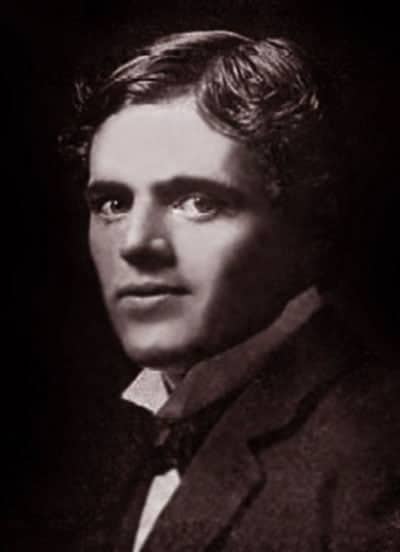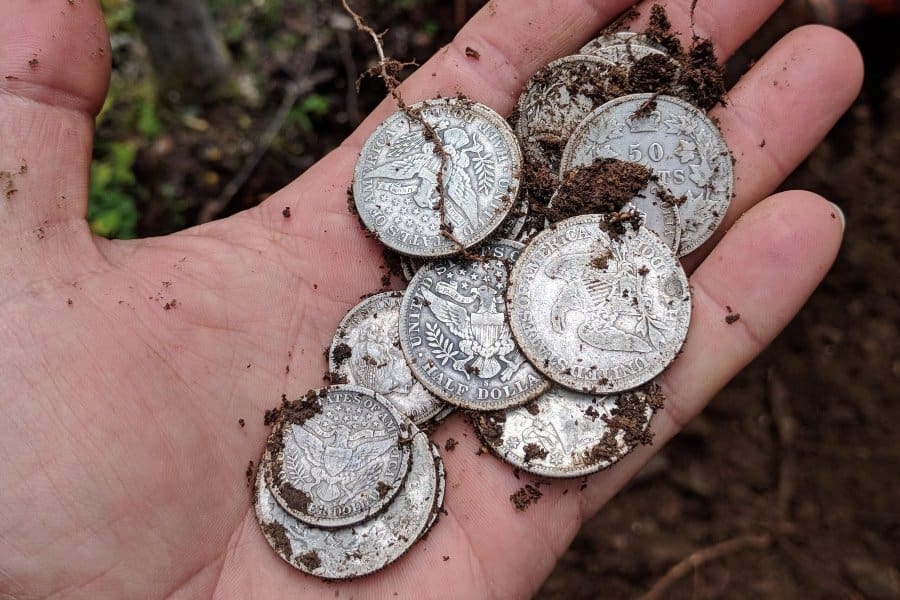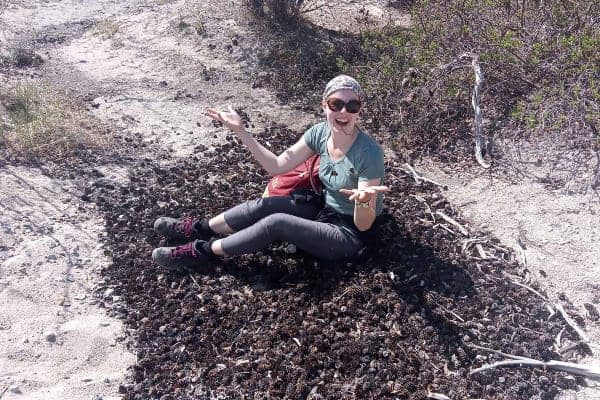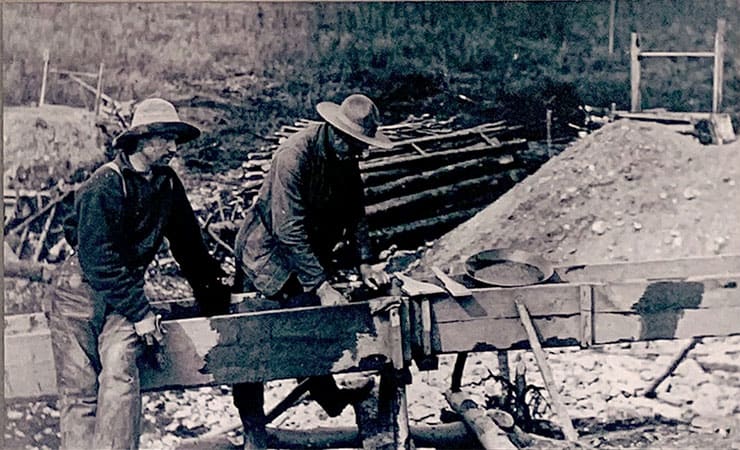Buck Choquette lived in Fort Wrangell, Alaska from 1883 until 1894. This photo of Fort Wrangell was taken in 1902. PHOTO: University of Washington / Frank H. Nowell Photographs of Alaska
On a recent canoe/camping trip down the majestic Stikine River from Telegraph Creek, B.C., to Wrangell, AK, one name kept popping up on all the tourist info boards along the way to the point where your humble and inquisitive northern history buff had to find out why.

Alexandre “Buck” Choquette was born on Aug. 17, 1830 in St-Benoît, in the farming county of Deux-Montagnes, in the province of Quebec. When he was 19 and working in a Montreal apothecary as a clerk/bottle-washer, he heard about the rich gold strike at Sutter’s Mill in California and set out to seek his fame and fortune.
In the early Spring of 1849, he traveled to California via the Lachine Canal, the Rideau Canal, the St. Lawrence Seaway, the Thousand Islands, Lakes Ontario, Erie and Huron, and Sault Ste. Marie. Think he was done? Not quite. He also hit Lake Superior, Winnipeg, Duluth, the Mississippi River south to parts of Missouri, including St. Paul, St. Louis, and Independence. Then he joined a wagon train on the Oregon Trail and crossed the Rocky Mountains, came through the Sierra Nevadas over Donner Pass, and arrived in California in July. There, he found all the ground already staked, but got a job as a mine labourer, mucker and panner. He stayed there two years and saved his wages for a grubstake.
Between 1851 and 1856, young Buck went north up California towards Canada by following the San Joaquin, Sacramento and Feather Rivers. He joined the crowds to each subsequent gold strike at places like Shasta Mountain, Trinity River, Scott River, Yreka, Jacksonville and Josephine Creek in Oregon Territory before going onto the Fraser River in B.C. in 1857.
Everywhere he went he was a day late or a dollar short to get the rich ground. After two years on the Fraser making wages, he heard about the Stikine River way up north next to Alaska. It was attracting prospectors, but was still largely unexplored. He went to Victoria in 1859 looking for a way to get up the coast and found a group of seafaring Tlingit natives going home in a large outrigger canoe. They called themselves Tahltans and agreed to take him on the 1,341-kilometre canoe ride up the Inside Passage to Wrangell on the Stikine delta.
In June 1861, after an eventful voyage, they reached the delta area of the Stikine where Buck, 31, met and married Georgiana, the beautiful daughter of the powerful local chief named Shakes. Russia still owned Alaska at the time. In July 1861, shortly after his wedding, he and Georgie left for the top of the Stikine river and “discovered” the glacier which he henceforth called Ice Mountain because it was his first close look at a calving glacier and he was speechless. It is still called Ice Mountain today.
One morning in the fall of 1861, he finally had his Eureka moment after taking a random pan near Telegraph Creek. “There’s color enough to match the northern lights!” Buck exclaimed before going into a jig as men crowded around to see the yellow dust gleaming with plenty of heavy gold nuggets. “Buck’s Bar” as it has been known ever since, marks not only the first discovery of gold on the Stikine River and in the huge Cassiar district, it was also the first major gold strike in the Alaska region and led directly to the Stikine Stampede in 1862-63, and to the Cassiar in 1874.
On March 13, 1866, Buck went into business as an employee of the Hudson’s Bay Company. In 1867 he set up his store between the Porcupine River and Ice Mountain where he remained with his family until 1870. From 1870 to the summer of 1875, he lived in Boundary Post with his wife and four children. From 1878 until 1894 he continued to barter goods from the company for trade on his own behalf. During the summer of 1878, a letter from Chief Factor William Charles was addressed to “BUCK, Ice Mountain, Stikine River.”
By 1880 his address had changed to Telegraph Creek, and from 1883 until 1894 he was residing at Fort Wrangell, at the mouth of the Stikine River within American territory. In 1886 Buck and his family went east to Montreal and Ottawa, where he had business with the members of Parliament to discuss the Canada/Alaska border situation. There, Georgiana died of smallpox. She was buried with her father, Chief Shakes, in British Columbia. With seven children to look after by then, Buck went back to Wrangell and married a relative of Georgiana’s named Aggie.
When word of the Klondike strike hit the Stikine in the fall of 1896, Buck made plans to send his three oldest sons cross-country to the Yukon River watershed while he and Aggie went south by steamer to Victoria to purchase everything they needed to open a store in Dawson City, which they would bring in the Spring of ‘97 up via St. Michael on the Bering Sea. The boys reached Dawson in the summer of 1897 to meet Buck and Aggie there. The family then opened a big general store to serve the hundreds of local miners and 30,000 stampeders. But in the spring of 1898, Henry, his favourite son, was fatally injured close to Dawson in an accident aboard a sternwheeler.
“Buck, 68, collapsed when they told him what had happened to his son. They all tried to cheer him up but Old Man Buck had no spirit to carry on. He died quietly of a broken heart that spring of 1898.” That’s according to his grandson Henry W. Clark who wrote Stampeder about his grandfather in 1930.
Buck made a will of his Yukon holdings on June 15, 1898 and died on or about June 17, leaving behind:
1 bench claim on Little Skookum, 10th tier.
½ interest in #54 Jensen Creek
1 bench claim on Eldorado Creek.
1/6 interest in #19 above on Last Chance
Cash on hand, $1,000.
Value of claims listed above: $500.”
At the end of his life, Buck Choquette shared his story with a young Jack London in Dawson City. The Call of the Wild featured a “Buck” as the main character[/caption]
“The cold statistics on gold rushers are amazing: Only one in 10 stampeders make enough to pay their way back home; one in seven don’t find any gold at all, and only one out of thousands makes a killing,” wrote Clark. “These men may have been dreamers, always seeking richer, distant fields. They may be called intransigent, or mercurial. Yes, and they were more than that. They were not content to sit at home and dream, they went out in quest of their vision. They did not sit back supinely hoping for a brave new world, they matter-of-factly set about building it. They were the essence of divine unrest. That is why Alexandre “Buck” Choquette is a vital part of the story of our great northwest, one of the few who were both a ‘49er and a ‘98er.”
As Buck lay quietly dying of grief in Dawson, resigned to his fate, a young stampeder from San Francisco was in the hospital being treated for scurvy. He’d spent the long winter in a cabin on Stewart River where it joins the Yukon River. The young man said he would like to meet a “real” gold prospector after listening to so many Cheechako wannabees all winter.
His name was Jack London and Buck spent his last days and hours in Dawson telling him true stories of his long pioneering life in the Northwest. Is it just coincidence, then, that the main character in his most successful novel, The Call of the Wild, is also named Buck?




